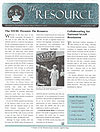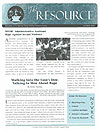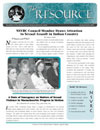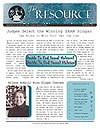The Use of Truth-Telling Devices in Sexual Assault Investigations
This guide examines the use of polygraph tests and other truth-telling devices (sometimes called “lie-detector tests”) in sexual assault investigations. It is meant to support the Violence Against Women Act and Department of Justice Reauthorization Act of 2005 (VAWA 2005) provision that truth-telling devices must not be used with sexual assault victims as a condition of charging or prosecution of an offense. This guide examines special issues relevant to using truth-telling devices with sexual assault victims.

 NSVRC's debut newsletter! Featured inside: American Indians' Inspiring Approach, Coalition Spotlight, NSVRC Library... and more.
NSVRC's debut newsletter! Featured inside: American Indians' Inspiring Approach, Coalition Spotlight, NSVRC Library... and more. The second volume for this NSVRC publication! Featured inside: Talking to Men About Rape, Blind Reporting, VAWNet, Coalition Spotlight... and more.
The second volume for this NSVRC publication! Featured inside: Talking to Men About Rape, Blind Reporting, VAWNet, Coalition Spotlight... and more. The third volume for this NSVRC publication! Featured inside: Working with Men to Prevent Sexual Assault, Women of Color - SCESA, SAAM Campaign, VAWNet... and more.
The third volume for this NSVRC publication! Featured inside: Working with Men to Prevent Sexual Assault, Women of Color - SCESA, SAAM Campaign, VAWNet... and more. The fourth volume for this NSVRC publication! Featured inside: Working Together And/ Or Apart, Prevalence of Rape by Clergy and Others, SAAM 2003... and more.
The fourth volume for this NSVRC publication! Featured inside: Working Together And/ Or Apart, Prevalence of Rape by Clergy and Others, SAAM 2003... and more.